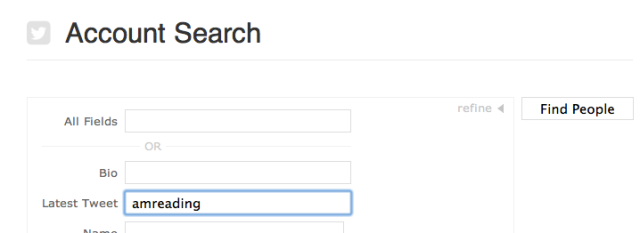by Tim Kane
I’ve heard folks talk about needing a twitter following of at least 10,000 before agents or editors will consider you. Hogwash. It’s not the number of followers that matters, but the quality. I know this because I’ve made all the mistakes and have survived.
When I first started Twitter, I abhorred follow backs (That’s when you automatically follow someone back after they follow you). I knew that having a low ratio of followers (people following you) to following (those you follow). If it’s upsidedown, that means that you’re too desperate. You follow thousands of people, yet only a few hundred follow you.
What we all want is the celebrity status. You know what I mean, when you have tens of thousands of followers and you only follow a scant hundred. But unless your name is a household word (not yet for me) this is nigh impossible to achieve.
Strike a balance. Strive to make your followers about even with your following. Most Twitter folk know that below 2000 is the building stage, so don’t worry about it. Now, this is easier said than done. To gain more followers you should rely on the autofollow or follow backs. Yes, you heard me. That very thing I used to hate.
It works like this. You follow some tweeps hoping that they will follow you back. If they do, awesome. More followers for you. If not, then you need to unfollow them to keep your ratio of followers to following even. The trick lies in using the right software.
Balance Your Followers
Enter ManageFlitter. This site allows you to peruse through all those tweeps you follow and see who’s following back. (Don’t worry, you can use it for free with some limitations.) Give people a few days or a week to follow you back. If they don’t, then unfollow. It’s that simple.
The Right Followers
Now the challenge to get followers who matter. I used to follow only other writers, because I was a writer. Yet this doesn’t make sense. I want readers, not writers. So for all my new followers, I seek out those that love reading. This is where ManageFlitter comes in again (although you can employ these same techniques by searching Twitter directly).
The search function allows you search tweeps with keywords. I often search the most recent tweet as people often don’t put relevant information in their bio.
My favorite searches are those words that readers tend to use:
- amreading
- goodreads
- reading
- bookreivew
- book addict
This brings up a a group of tweeps who have used this term. Most of them are actual readers. Now, a word of warning. I tried using just “read” or “book” and got terrible results. Many people use these words to refer to all sorts of activities and I ended up with the wrong sort of tweeps.
Engage
All this is well and good, but you have to engage your tweeps to make this successful. No one is going to follow you if all you do it push your own book or, worse yet, ignore twitter. Just log on a once a day and respond to people. Better yet, strike up a conversation with one of your new tweeps.
Have at it and soon you’ll have a bevy of new followers that want the writing you produce.



